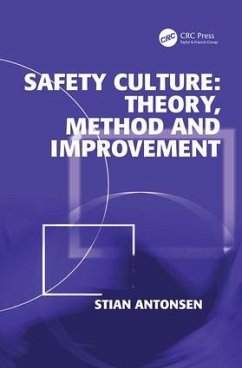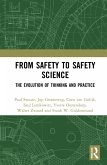The aim of this book is to show how a cultural approach can contribute to the assessment, description and improvement of safety conditions in organizations. The relationship between organizational culture and safety, epitomized through the concept of 'safety culture', has undoubtedly become one of the hottest topics of both safety research and practical efforts to improve safety. By combining a general framework and five research projects, the author explores and further develops the theoretical, methodological and practical basis of the study of safety culture. What are the theoretical foundations of a cultural approach to safety? How can the relationship between organizational culture and safety be empirically investigated? What are the links between organizational culture and safety in actual organizations? How can a cultural approach contribute to the improvement of safety? These are the key questions the book seeks to answer with a unified and in-depth account of the concept of safety culture.
'The book brings a critical, interdisciplinary perspective to the field of safety culture research, and provides a much-needed coupling between safety research and organization science. It is of great value for both researchers and practitioners. In my opinion, it is the first book to give an overall and balanced account of safety culture research.' Jan Hovden, Norwegian University of Science and Technology (NTNU), Trondheim, Norway 'Stian Antonsen has provided us with a well-written and balanced text, discussing safety culture from a theoretical as well as an empirical perspective, drawing both on existing literature and on his own research. He succeeds in bringing more clarity into an, until now, somewhat confusing, although important, conceptual field.' Per Morten Schiefloe, Norwegian University of Science and Technology, Norway 'The author has opened up new fields of reconsideration and research to ensure the constant progress of safety culture and application in every aspect of human employment. This is a book to read and refer to frequently, constantly finding some fresh food for thought and serious interest of achievement.' RoSPA Occupational Safety & Health Journal, July 2010 'This book is very clear, well written, and enjoyable to read. The details presented throughout the book are not overwhelming for readers to understand the key points. A combination of extensive theoretical perspectives and real examples presented in details is the strength of this book. Researchers in safety culture areas may benefit the most from this book. Additionally, the practical nature of the book also allows practitioners who work in safety area to apply the given concepts, recommendations, and ideas into the field. Particularly, managers in high-risk organizations who are determined to promote safety culture may find this book as a guidance to achieve high reliability.' HFES European Chapter Newsletter Sept 2010 'Stian Antonsen's book offers an excellent and much need








